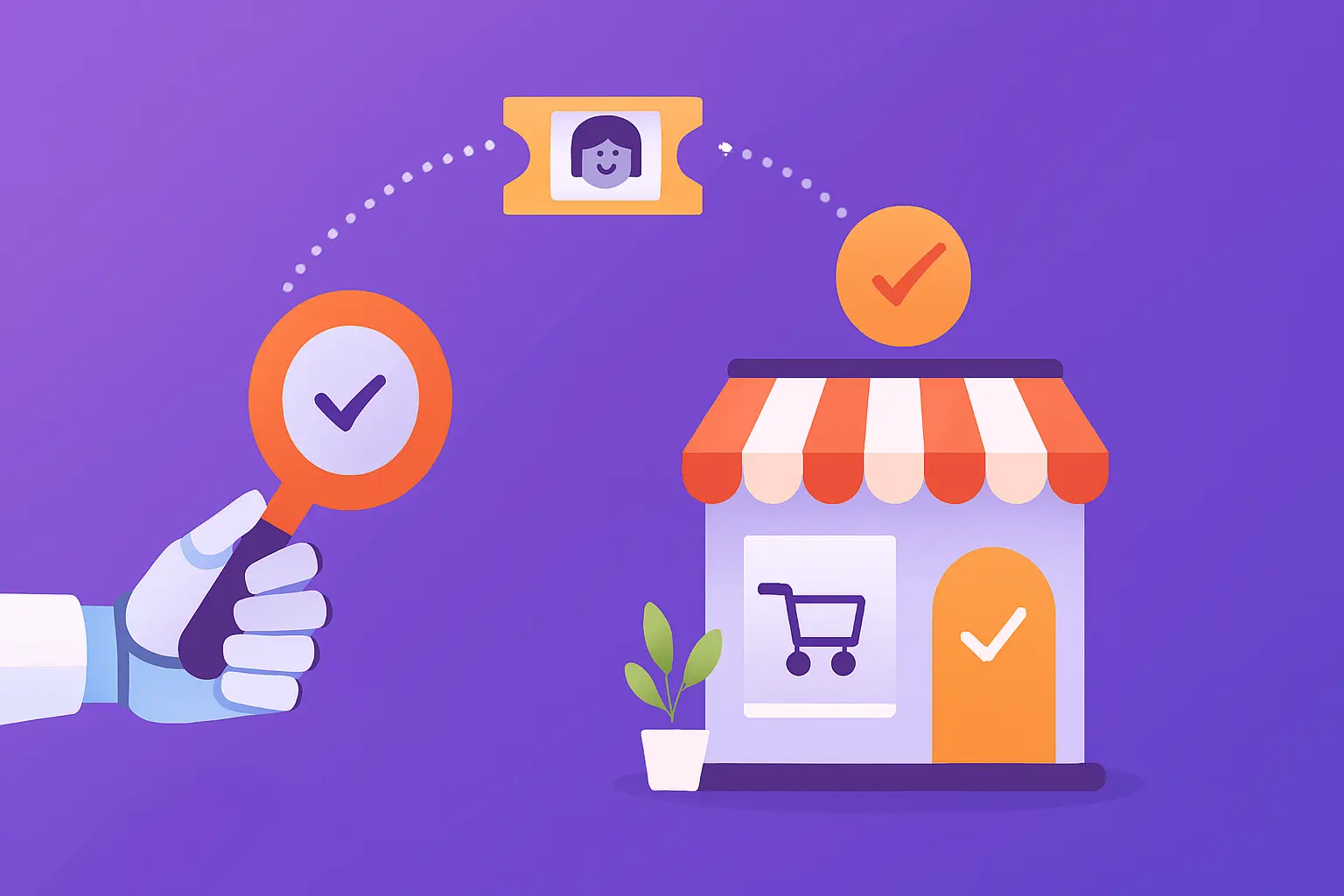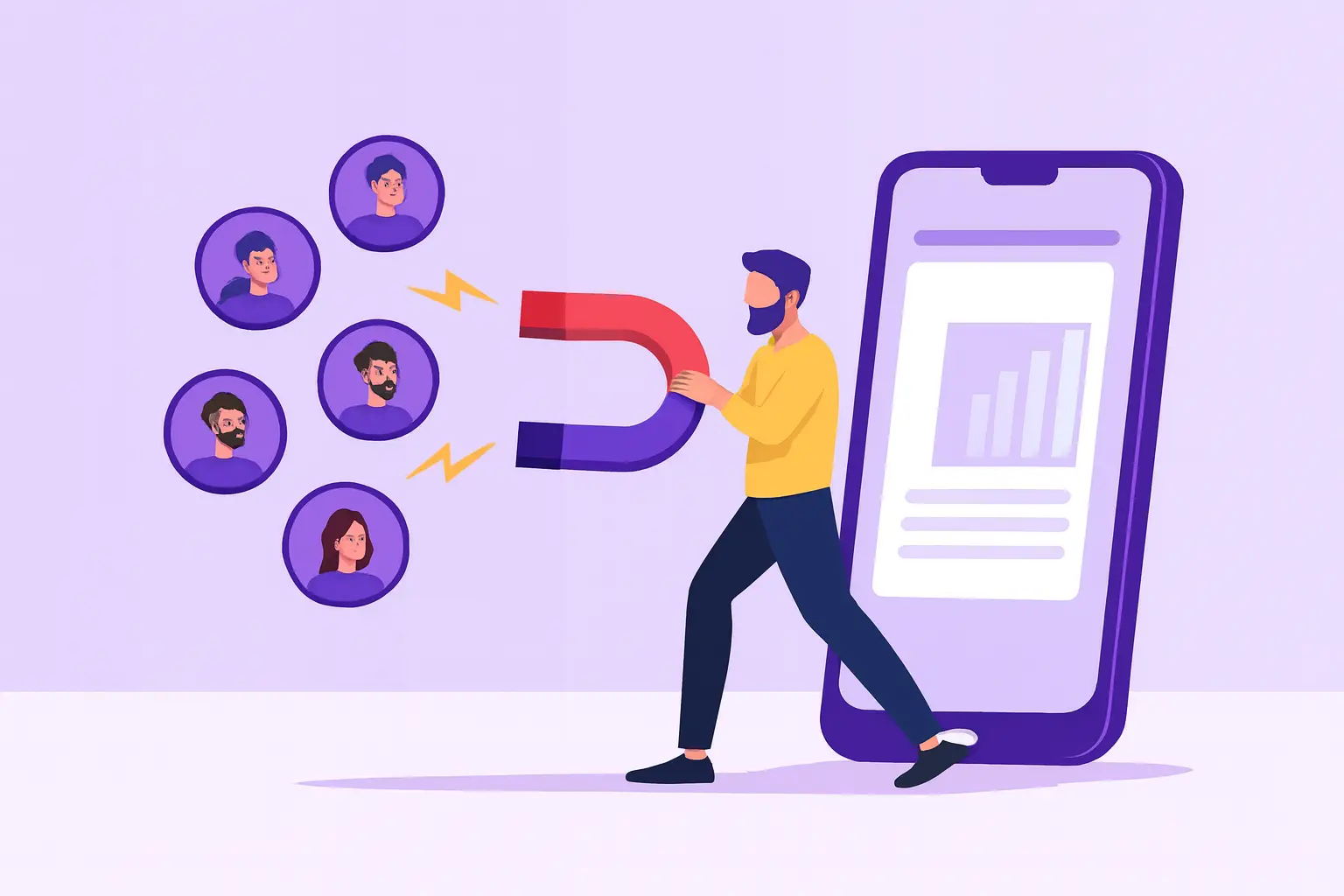Customer Service Technology: Trends, Examples, & Strategies
- July 16, 2025
- 13 mins read
- Listen
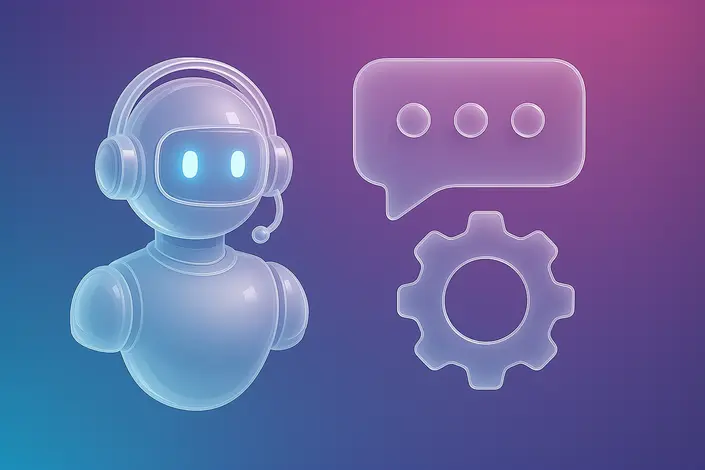
Your business thrives on happy customers. In 2025, outdated support hurts growth. Customer service technology fuels success. It saves time. It cuts costs. It drives sales. Studies show 85% of businesses see support as a profit driver.
Tools like live chat, AI chatbot, and ticketing system lead the way. Are you taking this opportunity to scale your business smarter? This blog explores 2025 trends, leading tools, and practical strategies.
So, you’re just a few steps away from boosting your business with cutting-edge support!
What is Customer Service Technology?
Customer service technology is software that improves support for businesses. It automates tasks, personalizes interactions, and optimizes processes. Think chatbots, live chat, ticketing systems, and CRMs. These tools handle queries fast.
They use AI to tailor responses and analyze data for better decisions. Why does it matter? Customers expect quick, seamless service.
For example, AI-driven CRMs cut resolution times by 30%. This technology turns support into a revenue driver.
Why Customer Service Technology is Crucial for CX?
Customer service technology transforms customer experience (CX). It meets modern expectations. It drives loyalty and revenue. 85% of businesses use tech to boost CX. Without it, companies lose customers to competitors.
This technology makes support faster, smarter, and more personal. Below are five key reasons it’s essential for CX.
- Customers expect quick answers. Slow responses lead to frustration. Technology like chatbots delivers instant replies. It ensures support is available 24/7. This meets the rising demand for speed. Fast service boosts satisfaction scores.
- Generic responses turn customers away. Technology uses AI to customize interactions. It analyzes data like purchase history and preferences. This creates tailored experiences that feel personal. Personalized support builds stronger customer relationships. Technology makes it possible.
- Manual processes slow down teams. Technology automates tasks like ticketing and query handling. It frees agents to focus on complex issues. This cuts resolution times by up to 30%. Streamlined processes reduce customer wait times. They improve efficiency and CX. Businesses save costs and keep customers happy.
- Data unlocks better service. Analytics tools track customer behavior and feedback. They identify pain points and trends early. This lets businesses fix issues proactively. Insights help predict customer needs. Strong data drives smarter decisions. In 2025, analytics are key to great CX.
- Customers switch between channels like chat, website, email, and social media. Inconsistent support frustrates them. Technology unifies these channels for seamless experiences. It ensures customers get the same service everywhere. Consistent CX builds trust and loyalty. In 2025, omnichannel support is a must. Technology makes it happen.
Customer Service Technology Examples: Top Tools to Consider
Customer service technology boosts support. It saves time and improves CX. In 2025, businesses need tools to stay ahead.
These include live chat, chatbots, ticketing systems, and CRMs.
Let’s explore some key customer service technologies that will help you to scale your business and improve CX.
Live Chat Solutions
Live chat speeds up support. It increases conversions. It builds customer trust. For example, REVE Chat’s proactive chat triggers engage visitors instantly. Its co-browsing feature guides users in real time. Video chat adds a personal touch.
WhatsApp integration reaches customers on their preferred platform. These features boost conversions by 25%. Analytics track chat performance for smarter strategies.
Intercom offers automation but lacks video support. REVE Chat’s robust tools make it ideal for real-time engagement.
AI Chatbots
Chatbots automate queries. They save time and scale support. For instance, REVE Chat’s chatbot uses advanced NLP and LLM for human-like responses. Its sentiment analysis detects customer mood to tailor replies.
This resolves 80% of routine queries. It integrates with CRMs for seamless data flow. Analytics optimizes bot performance. Cognigy suits enterprises. Kore.ai excels in language processing. REVE Chat’s AI leads for affordability and impact.
Ticketing Systems
Ticketing systems organize issues. They streamline workflows. They cut resolution times. In this case, REVE Chat’s ticketing system wins the game. It uses AI for smart prioritization. It integrates with chat, email, and social media. This ensures omnichannel consistency.
Besides, it auto-routes tickets to the right agents. It reduces resolution times by 30%. Its unified platform excels in scalability.
CRM Platforms
CRMs unify customer data. They enable personalization. They drive loyalty. Salesforce Service Cloud uses AI for tailored interactions. It predicts needs with analytics. HubSpot Service Hub offers a free tier with ticketing. In 2025, 71% of CX leaders use CRMs.
They provide a comprehensive customer 360 view. No-code integrations simplify setup. Salesforce leads for enterprises. SMBs need cost-effective options.
How to Implement Customer Service Technology: A Step-by-Step Guide
Customer service technology boosts efficiency in many ways. It enhances CX and drives revenue. Implementing it can feel complex.
A clear plan simplifies the process. This guide outlines five steps to succeed. Each step includes practical tips and examples. Follow these to transform your support.
Step 1: Assess Your Needs
Start by identifying pain points. Slow responses or high churn hurt CX. Analyze current support data. For example, a retailer found 40% of queries were repetitive.
This showed automation potential. Survey customers to understand expectations. Set goals like faster resolutions or better personalization. Use analytics to pinpoint gaps. This step guides tool selection.
Step 2: Choose the Right Tools
Pick tools that match your goals. Consider business size and budget. REVE Chat offers live chat, chatbots, and ticketing for SMBs and enterprises. Its WhatsApp integration reaches customers easily.
Look for AI and analytics features. Salesforce suits large businesses but costs more. Freshdesk is affordable for small teams. Test free trials to ensure fit. This step ensures scalability.
Step 3: Train Your Team
Technology needs skilled users. Train staff on new tools. Teach agents to use chatbots and analytics.
For example, a telecom-trained staff on AI prompts. This cut query times by 25%. Offer hands-on workshops. Choose user-friendly platforms to ease adoption. Regular training keeps skills current. This step maximizes tool impact.
Step 4: Scale with Omnichannel
Customers use multiple channels. Unify support for seamless CX. Omnichannel platforms connect chat, email, and social media. For example, an e-commerce brand added social media support. This boosted satisfaction by 20%.
In 2025, 67% of customers prefer social media to support Sprout Social, 2024. Use tools with robust APIs. Train agents to manage all channels. Test workflows for consistency. This step builds loyalty.
Step 5: Measure and Iterate
Track success to improve. Monitor KPIs like resolution time and CSAT. For example, a contact center used analytics to raise CSAT by 20%.
95% of businesses report AI-driven savings, Salesforce, 2024. Use tools with built-in analytics. Set benchmarks like 30% faster resolutions.
Gather customer feedback often. Adjust strategies based on data. This step drives ongoing CX gains. Iterate to stay ahead.
Top 5 Customer Service Technology Trends for 2025
Customer service technology evolves fast. In 2025, new tools will reshape how businesses connect with customers. These trends drive efficiency, personalization, and loyalty. They meet rising customer expectations.
Data shows 85% of businesses use tech to boost revenue. Staying ahead is critical. Below are the top five trends to watch, with in-depth insights to prepare your business.
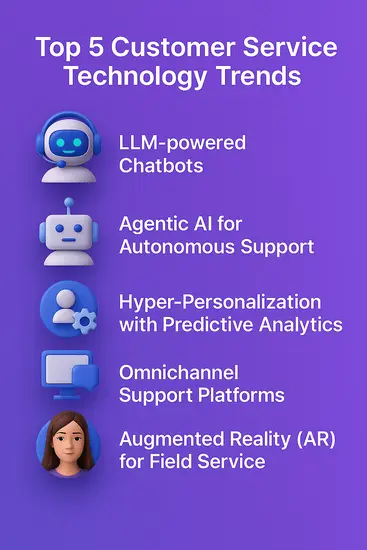
1. LLM-powered Chatbots
Chatbots now handle complex queries. They use advanced natural language processing (NLP). In 2025, 80% of support teams will adopt LLM chatbots. These bots offer human-like responses. They resolve issues 24/7 without agents.
For example, REVE Chat’s AI chatbot automates ecommerce orders, cutting response times. This saves costs and boosts satisfaction. Businesses can integrate chatbots with CRMs for seamless data flow. However, ethical AI use is
2. Agentic AI for Autonomous Support
Agentic AI acts without human input. It makes decisions based on business goals. It will automate 90% of routine tasks. This includes ticketing, upselling, and troubleshooting. For instance, Palantir’s AI engine prioritizes queries automatically.
It frees agents for high-value tasks. This trend cuts costs and boosts revenue. Agentic AI also predicts customer needs using data. Businesses must train teams to oversee AI decisions. This ensures accuracy and trust.
3. Hyper-Personalization with Predictive Analytics
Customers crave tailored experiences. Predictive analytics uses AI to analyze behavior. It forecasts needs based on purchase history and patterns.
For example, Amazon’s AI suggests products based on past buys. This increases sales and loyalty. Analytics tools integrate with CRMs for real-time insights. Businesses can proactively solve issues before they arise.
Training staff on data tools is crucial. This trend drives deeper customer connections.
4. Omnichannel Support Platforms
Customers use multiple channels daily. They expect seamless support across all. Omnichannel platforms unify chat, email, and social media. 80% of customers will demand this consistency.
For example, REVE Chat’s platform integrates live chat and ticketing for cohesive experiences. This reduces frustration and builds trust. Data shows 67% of customers prefer social media for support.
Businesses need robust APIs for integration. Training ensures agents handle all channels well. Omnichannel is now a must-have.
5. Augmented Reality (AR) for Field Service
AR transforms field service support. It provides visual guidance for technicians. AR will improve first-time fix rates. For example, IKEA’s AR app lets customers visualize furniture in their homes.
This cuts support queries by 20%. AR also enables remote diagnostics via video. It reduces downtime and costs. Businesses can train technicians using AR simulations.
Data security is vital for AR tools. This trend enhances CX for complex issues.
Case Study: Real-World Success with Customer Service Technology
Customer service technology creates impact. It transforms how businesses serve customers. Canadian Hearing Services shows how.
They support Deaf and hard-of-hearing Canadians. Their story inspires action. It proves technology drives results. This case study shares their journey. It offers lessons for your business.
Canadian Hearing’s Mission
They offer counseling, hearing tests, aural rehabilitation, ASL classes, device replacements, and hearing aid services. One in three Canadian adults faces hearing loss Canadian Hearing Services, 2023.
Their goal is accessible support. Before technology, slow responses frustrated customers. Manual processes caused delays.
They needed faster, personalized service. A modern solution was critical. They turned to technology to meet needs. This set the stage for transformation.
Implementation: Deploying a Modern Solution
Canadian Hearing adopted an all-in-one platform. They used REVE Chat’s live chat, chatbots, voice calls, and video calls.
Live chat streamlines website inquiries. Chatbots automate hearing test bookings. Voice and video calls, enhanced counseling, and ASL classes.
Agents trained on AI features easily. The platform unified channels. This created seamless, omnichannel support.
Result: Measurable Benefits Achieved
The solution delivered big wins. Response times dropped by 40%. Chatbots handled 80% of booking queries. Video calls boosted counseling engagement by 30%. ASL class inquiries via live chat grew 25%.
Device replacements are processed 35% faster. Customer satisfaction hit 90%. Loyalty scores soared. Canadian Hearing’s mission thrived.
Key Takeaways for Your Business
This success story shows technology’s power. A unified platform streamlines support. It personalizes interactions. It scales across channels.
Start by assessing your needs. Choose tools like chatbots or live chat. Train teams for quick adoption. Track KPIs like CSAT and response time.
Challenges and Solutions in Adopting Customer Service Technology
Adopting customer service technology can be tough. It promises better CX and efficiency. But challenges arise. Budgets, staff, systems, and metrics create hurdles.
Overcoming these is key to success. Below are four common challenges with practical solutions. Use these to implement technology smoothly.
1. Budget Constraints
Challenges: High costs block technology adoption. Many tools have steep price tags. Small businesses struggle most.
For example, enterprise CRMs can cost $500 per user each month. Hidden fees for setup or training add up. Limited funds slow down scaling. This delays CX improvements.
Solution: Start with affordable tools. Many platforms offer free tiers or low-cost plans. For example, some CRMs have free versions with basic features. Cloud-based solutions reduce hardware costs. Prioritize tools with high ROI, like chatbots.
Negotiate pricing or use trial periods. Budget-friendly options ensure scalability without breaking the bank.
2. Employee Resistance
Challenges: Staff often resist new technology. They fear job loss or steep learning curves. Unfamiliar tools lower morale. For example, agents may avoid AI chatbots, preferring manual tasks. Lack of training worsens this. Resistance slows implementation. It hurts CX and efficiency.
Solution: Invest in training and change management. Offer hands-on workshops. Show how tools simplify work. For example, train agents to use AI for faster resolutions. Highlight job security, tech enhances roles, not replaces them.
Choose user-friendly platforms to ease adoption. Regular feedback sessions build confidence. This turns resistance into enthusiasm.
3. Integration Complexity
Challenges: Integrating new tools is complex. Legacy systems don’t always connect. Data silos disrupt workflows.
For example, a CRM may not sync with existing ticketing software. This creates inconsistent CX. Poor integration wastes time. It frustrates customers and staff.
Solution: Choose platforms with robust APIs. Test integrations before full rollout. For example, cloud-based tools sync easily with CRMs. Work with vendors for custom solutions. Use no-code platforms for a simpler setup.
Train IT teams on integration protocols. Seamless integration ensures unified support.
4. Measuring ROI
Challenges: Proving technology’s value is hard. ROI metrics are unclear. Businesses struggle to track benefits. For example, linking chatbots to revenue growth is tricky. This delays further investment. Without proof, stakeholders hesitate. It slows tech adoption.
Solution: Use analytics to track KPIs. Monitor resolution time, CSAT, and cost savings. For example, a contact center saw 20% CSAT gains with analytics.
Set clear benchmarks, like 30% faster responses. Use tools with built-in reporting. Gather customer feedback to show impact. Clear metrics justify investment and drive success.
Future of Customer Service Technology: What’s Next?
Customer service technology is evolving fast. It shapes how businesses connect with customers. Beyond 2025, new trends will redefine CX. AI, automation, and data drive this change.
The future promises smarter, proactive support. Below are four trends to watch. They will transform customer service by 2026.
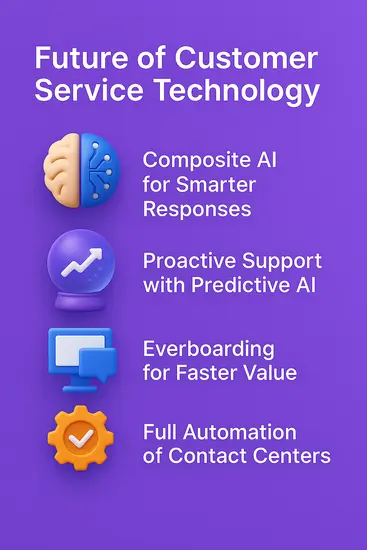
Composite AI for Smarter Responses
Composite AI blends multiple AI models. It combines LLMs with knowledge graphs. This delivers precise, context-aware replies. Current chatbots struggle with complex queries.
It improves accuracy by 40%. For example, it can resolve nuanced issues instantly. Businesses must invest in AI training.
Data privacy will be critical. This trend enhances CX with smarter interactions.
Proactive Support with Predictive AI
Reactive support is outdated. Predictive AI anticipates customer needs. It uses data to prevent issues. For example, it flags device failures before complaints.
This cuts query volumes by 25%. It boosts loyalty and retention. Integration with analytics is key. Businesses need robust data systems. Proactive support will redefine customer trust.
Everboarding for Faster Value
Everboarding means ongoing customer onboarding. It replaces one-time setups. Customers get continuous guidance. This speeds up value delivery. For instance, apps now offer real-time tutorials.
It increases adoption by 30%. Businesses must create dynamic guides. AI-driven prompts enhance this process. Everboarding keeps customers engaged long-term.
Full Automation of Contact Centers
Contact centers are going fully automated. AI will handle most interactions. This includes chat, voice, and ticketing. For example, AI agents will upsell autonomously.
This cuts costs by 35%. Human oversight ensures quality. Businesses must balance automation and empathy. Ethical AI policies are essential. Full automation will drive efficiency and scale.
Conclusion
Customer service technology is a game-changer. It drives efficiency. It boosts personalization. It fuels revenue. From AI chatbots to omnichannel platforms, tools transform CX.
Start small with solutions like REVE Chat’s free trial. Scale smart with data-driven strategies. Don’t wait, customers expect seamless support now. Try new tools today.
Frequently Asked Questions
Customer service tools handle sensitive data. Breaches risk customer trust. Platforms use encryption and secure APIs to protect information. Regular audits and compliance features keep data safe.
Growing businesses need flexible tools. Scalable platforms adapt to higher query volumes. Cloud-based solutions expand without heavy costs. They support teams from small startups to large enterprises.
Loyal customers drive revenue. Technology personalizes interactions and speeds up support. Self-service options empower users to solve issues. This builds trust and keeps customers coming back.
Support teams need to work together. Technology unifies communication across channels. Shared dashboards and real-time updates align agents. This ensures faster, coordinated responses.
Self-service lets customers find answers alone. Knowledge bases and AI chatbots provide instant solutions. This reduces agent workload. It also meets customer demand for quick fixes.



